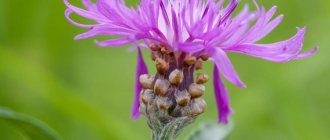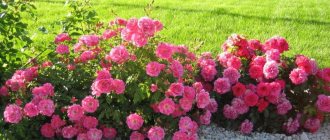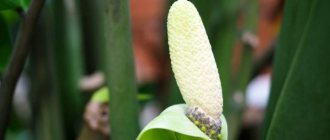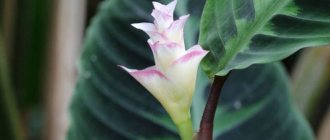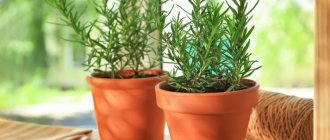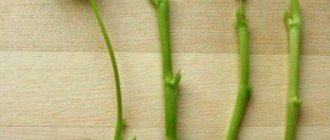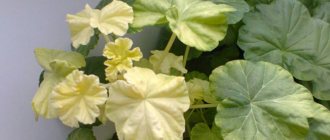Important substances
The most important for pelargonium are potassium, nitrogen and phosphorus. Each of them plays its role:
- Potassium . Important for normal bud formation and flowering, it is included in all fertilizers for abundant flowering, including geraniums.
- Nitrogen . A necessary element for cell division. Responsible for the growth of all types of flower tissue.
- Phosphorus . Stimulates the growth of a powerful root system and makes the flower resistant to short daylight hours and low temperatures in winter.
It is necessary to make sure that in the formula of the complex for pelargonium the amount of potassium and phosphorus is not less than the amount of nitrogen. The minimum acceptable formula K:N:P looks like this: 1:1:1. The ideal combination is 1.5:2:1. The first option is best used in the spring and before bud formation, and as soon as the first buds appear, it is recommended to switch to the second type.
In addition to these macroelements, development depends on microelements, which also come in the form of a solution from the soil. These are manganese, zinc, iron, copper, boron and calcium. It would be good if they were also listed as part of the complexes.
How to feed geraniums for various growing problems
How to fertilize geraniums if the leaves have faded and turned white? The proven remedy “Agricola” will help save the plant. This fertilizer contains not only the necessary microelements, but also the humate necessary for geraniums.
Agricola for geraniums
Attention! The drug must be diluted exactly according to the instructions, otherwise there is a high risk of burning the root system.
A change in foliage color primarily signals a lack of potassium and phosphorus in the soil. If yellowing occurs on the lower leaves, then this is a consequence of a lack of magnesium or zinc. If the tops dry out, then manganese and calcium must be added to the soil. In this situation, the correct selection of comprehensive protective equipment will help.
Indoor subspecies require more careful attention than outdoor ones. It is important not to forget that flowering for geraniums is extremely stressful.
Timely fertilizer
Timely addition of useful and necessary microelements will not only support pelargonium, but will also help it in the formation of beautiful and abundant inflorescences. Gone are the days when flowers at home grew independently, with virtually no human intervention. Modern varieties of geraniums can delight you with very lush flowering, but such abundance is impossible without proper feeding.
Forms of drugs
Experts recommend paying attention to the release form. There are drugs on sale in the following form:
- Granules provide an excellent prolonging effect. Gradually dissolving in the soil, they provide a constant supply of small concentrations, which eliminates volley burns of the roots.
- Sticks - the same action as granules. The effect of growing on natural nutrient soil is created.
- Liquid concentrates are more convenient for dosing, especially when diluted in small volumes.
- Crystals are easily dissolved in water, so they are also quickly absorbed drugs.
Before applying fertilizers, you should familiarize yourself with the recommended doses and methods of use.
For young plants
Before you figure out what kind of fertilizer geranium loves, you need to understand that the composition of the complexes should change depending on what stage of development the plant is at. So, during active growth and during the period of appearance of buds, emphasis should be placed on different microelements.
Very young specimens are sprouts obtained from seeds or recently rooted cuttings. In the first weeks they do not need fertilizer, but from 3-4 weeks you can begin to gradually feed them. Nitrogen becomes the most important element during the period of active growth of vegetative mass. It is this substance that acts as a building material for each cell, so its reserves in the soil may be insufficient.
At this stage, it is necessary to use universal complexes for decorative deciduous crops. But the concentration should be adjusted: first it is made 2-3 times weaker than that indicated in the instructions for the drug. This approach is necessary so as not to burn the young root system with a strong saline solution.
The intervals between applications should be at least 7-10 days. Feeding more often is prohibited. From the age of two months the plants can switch to the usual concentration.
When growing seedlings after picking, it is good to use organic or mixed complexes. Experts recommend paying attention to “Planta” - active vermicompost and “Kemira”. After such treatments, the root system will be branched, and the ground part will form a beautiful crown.
What is fertilizing and why is it needed?
Fertilizing is the introduction of mineral and organic fertilizers into the soil , which help the plant to grow and develop well. It is especially necessary to systematically apply fertilizers if the plant grows in a pot, since the plant cannot obtain nutrients from natural sources.
As for geranium, it needs a lot of nutrients, especially during the active growing season, since the plant spends a lot of vitality on flowering, which needs to be restored.
How to understand the need
An excess of nutrients is just as harmful to geraniums as a deficiency, so you should not use fertilizing when they are not necessary. After purchasing a flower, it is necessary to replant it in a fresh substrate, since most often it is brought to stores in a transport mixture. It is very light, which is convenient for loading and shipping products, but it contains no nutrients at all. When replanting, it is best to use a ready-made composition for geranium or pelargonium, which contains all the vitamins and minerals in a balanced composition.
Such a reserve is depleted in about six months, and from this moment on, signs of nutritional deficiency can be detected:
- the appearance of diseases such as late blight or rust;
- less intense leaf color than before;
- growth slowdown;
- absence of buds for a long time in an adult specimen;
- falling of flowers;
- lethargy of leaf blades and stems;
- frequent illnesses due to weakened defenses.
If several of these signs are noticed, this is a clear signal that the plant is not getting enough nutrition.
Features of geranium care
- Despite the fact that geranium is an unpretentious plant, you need to observe some nuances:
- The soil for geraniums must be fertile. Only then will pelargonium produce a maximum of flowers and a minimum of greenery. When transplanting, you need good drainage.
- There is no need to spray the flower. But it is important to provide the plant with fresh air. In summer, it is better to move the plant to the balcony, or you can plant it in a flower bed.
- Geraniums should grow in a well-lit place. She is not afraid of direct rays of the sun. Only on particularly hot days is the flower removed from direct contact.
- There are no special requirements for temperature. In winter, the optimal temperature is 15 degrees.
- The plant does not tolerate fresh organic matter.
- Iodine is ideal for plants as a fertilizer, but you should not apply more than 50 ml of it.
You may be interested in: Succinic acid as a fertilizer for indoor flowers
Folk remedies
Don’t think that the best fertilizer for geraniums is a store-bought complex. Folk remedies can give no less effect than products developed and produced in production.
The most commonly used are:
- Iodine . Dilute 1 drop per liter of water. If the dosage is increased, there is a risk of causing a root burn. With a severe burn, even the death of the flower may occur. When watering, try not to get it on the stems.
- Hydrogen peroxide . Dilute 50 ml per 2 liters. Water with this solution once a month.
- Boric acid . Dilute 10 g per bucket of water. Acts as a growth stimulator. It speeds up metabolic processes and increases chlorophyll levels. For greater efficiency, add 1 cup of wood ash to the solution.
- Manure _ Take mullein older than 3 years, since fresh will lead to nitrogen burns. Pelargoniums are most often used for outdoor plantings, since manure, like bird droppings, retains an unpleasant odor in the house.
- Sugar . Dilute the solution until the same level of sweetness appears as when making tea. This fertilizer can be used even in winter.
- Wood ash . It not only saturates the soil with useful substances, but also disinfects it. Therefore, it is especially important to use it in rooms with high humidity or in the fall before wintering in conditions of low temperatures. Ash is diluted in a proportion of 40 g per liter of water.
Banana peels are often used, which must first be dried and ground to powder in a coffee grinder or blender. This powder is poured onto the surface of the earth, after which it is loosened. Gradually, with watering, banana particles will fall deep into the soil. Thus, the substrate will be enriched with potassium and humic acids. Recommendations for digging in fresh peels are controversial: in this way, you can cause rotting of the roots from decomposing organic matter.
How to water geraniums for abundant flowering at home and outdoors
Beginning flower lovers are often interested in how to water geraniums so that they bloom profusely? Professionals recommend the following feeding options:
- Fertilizer for geraniums for flowering should include 20 grams of sifted ordinary wood ash and 1 liter of warm water. Using this product will help increase the number of inflorescences.
- Experts also use iodine to form flower mass. This pharmaceutical drug not only helps the formation of inflorescences, but also significantly increases the number and size of buds. For the solution, you need to take 1 ml of iodine and dilute it in 5 liters of water at room temperature. For the indoor variety, it is not recommended to pour in more than 50 ml of this product. Fertilizer is applied along the edges of the pot to avoid damage to the stem and roots.
- Many novice gardeners are looking for an answer to the question: how to water geraniums so that they bloom magnificently at home? Vitamins are often used for these purposes. If you feed geraniums with drugs belonging to group B, you can easily achieve a large number of flowers. 1 ampoule is diluted in 2 liters of water and the soil around the root system is spilled with this product. Subsequent procedures are carried out every month. It is recommended to alternate vitamins: 1st time - B1, 2nd - B6, 3rd - B12.
- You can also use a pre-prepared solution of magnesium sulfate for these purposes. 1.5 tablespoons of this microelement are diluted in 10 liters of water.
Planta Miracle growth
How to water geraniums so that they bloom magnificently outdoors? Using any organic preparations for these purposes will allow you to get quick results. Adding manure will not only improve the quality of the flowers, but will also help the leaves acquire brightness and juiciness. To prepare, add 1 cup of humus or manure to a bucket of water.
Some owners say that it is best to use a special fertilizer for indoor pelargonium. Feeding is carried out twice a month. In winter, their number is halved.
From mid-spring, it is necessary to add any nitrogen preparation to the soil. It is needed for the formation and growth of leaves, as well as root processes.
On a note! Preparations for home flowers taken outside in the summer are no different from those growing in the garden.
What to feed the plant during flowering
To obtain buds and then flowers of pelargonium at home, it is necessary to apply fertilizer containing calcium to the plant. You can use an excellent natural remedy - crushed eggshells.
Seasonality
Throughout the year, this crop does not need feeding equally. If in spring nitrogen is primarily needed, then in spring and summer each element is necessary for harmonious development. At home, fertilizer for geraniums is not used in late autumn and winter. At this time, the length of daylight hours shortens, which slows down all life processes. If you continue to stimulate pelargonium to grow and bloom, you will get the opposite effect: instead of a powerful green mass, thin shoots with elongated internodes will grow. This is very bad for the plant, it loses its strength, and you won’t see any flowering from it next season. For this reason, from mid-September to March, complex fertilizers are not actively applied.
Spring
After formative and sanitary pruning, rapid restoration of shoots is necessary, so nitrogen-containing compounds are used. They are used 2 times a month with an interval of 2 weeks:
- March: 10 g of ammophoska or azofoska per liter of water;
- April: similar composition;
- May: 5 g of potassium superphosphate per liter of water.
Summer
After the growth of young branches, the laying of buds begins. At this moment it is very important to support the geranium so that the flowering is abundant. At this stage, feeding is allowed not once every 2 weeks, but once every 10 days. The following compositions can be used:
- June: 5 g of potassium superphosphate per liter of water;
- July: solution of 5 g of potassium phosphate and 5 g of azophosphate per liter of water;
- August: a solution of 1 drops of iodine and 20 ml of hydrogen peroxide for planting flowers for next year.
Autumn
The only month when fertilizing is still allowed is September. The concentration of all complexes is already being reduced. The introduced substances are aimed at preparing the geranium for a successful wintering. To prepare the root system, add 3 g of superphosphate dissolved in a liter of water.
From October to the end of February there is a rest period when the flower is not watered so intensively and fertilizers are not applied at all.
Methods for propagating geraniums
To obtain new flowers, you can use cuttings and dividing tubers.
Moreover, the latter method is in demand for propagating garden plants, although, if you wish, you can use it at home. But why do this if you can get a new bush by simply cutting cuttings? They need to be harvested in the spring.
How to plant geranium? To do this, shoots cut from the top of pelargonium should be placed in water. Keep in mind: the shoot must have at least 3-4 leaves.
At normal temperatures, cuttings grow roots very quickly. After this, the shoot can be moved to a pot with soil. Just before you transplant the cutting into the soil, let it dry out after watering it. Once it starts to grow in the pot, pinch off the top.
Now you know how to plant geraniums as simply as possible. If you do everything correctly, then from a small shoot in just a few months a large beautiful bush will grow, which will immediately delight you with its luxurious flowers.
Application methods
Whatever fertilizer you choose for flowering geraniums, it can be applied in three different ways:
- According to the sheet . At the same time, you need to make sure that the leaves do not get exposed to the sun's rays, which can cause burns. It is necessary to use a spray bottle with a fine mist. You need to spray so that the water does not collect in drops and flow down. With this method, nutritional deficiencies can be quickly eliminated.
- Regular watering . This technique is the most common and in demand. It is carried out according to the same rules as regular watering of geraniums.
- Immersion in water . In this case, there is no need to keep the pot in the solution for a long time, 5 minutes is enough. For the oiliest soils that are poorly saturated with moisture, the time can be increased to 10 minutes.
The first method is more considered emergency, while the latter are suitable for systematic use.
Consequences of improper fertilization
Frequent addition of additives is not recommended, as it can harm the plant, and it will begin to hurt and wither. Main consequences:
- yellowness and spots appear on the leaves;
- the root system gets burned;
- the growth of greenery increases, while the buds do not bloom lushly;
- flowers are completely absent;
- leaves fall.
Every gardener’s goal is to achieve bright and abundant flowering. It turned out that this is not so difficult to do, especially when it comes to geraniums. The main feature is this: geranium initially grows in soil sufficiently enriched with useful substances.
In summer and spring, it is recommended to give complex supplements containing minerals. Also, do not forget about watering with iodine. A properly calculated volume and optimal mode of fertilizing will ensure long-term flowering of the pet, which cannot but please the owner’s eye.
Important Tips
In addition to what fertilizers to feed geraniums, it is also important how to do it. There are a number of rules, violation of which can cause problems:
- Lighting . In summer, when a flower is exposed to direct sunlight for more than 4-5 hours a day, the plant experiences severe stress, so before you start fertilizing, you need to provide shading or move the pot to another place. You can start adding the nutrient solution no earlier than a day after this.
- Solution temperature . Whether when watering or spraying, you must use warm water. Cold will lead to the development of fungi or cause stress to the plant.
- Pre-humidification . The soil should be moistened within a day or two so that the suction hairs of the root system are not burned by the strong mineral solution.
- Loosening . After feeding, the top layer must be loosened so that a crust does not form. This will saturate the soil with oxygen, which promotes the absorption of nutrients.
- Diagnostics . When signs of wilting appear, do not immediately grab mineral complexes. First of all, it is necessary to check the geranium for the presence of parasites or fungal diseases, since most often the reason for the deterioration of the flower’s condition lies in them.
- Pre-landing preparation . Before transplanting or transshipment, fertilizer application is stopped 2-3 weeks. This reduces stress after moving the flower to a new container and soil.
By adhering to these rules, you will be able to grow healthy and abundantly flowering pelargonium, which will delight you with its bright inflorescences every season.
How to make geraniums bloom
If a geranium does not bloom, it is not satisfied with the conditions in which it is located, or the plant is not healthy. First you need to review the temperature conditions and watering regime. If the plant is indifferent to air humidity, then a lot depends on the condition of the soil.
Conditions for flowering
Why the orchid does not bloom: the main reasons and methods of dealing with them
Overwatering is dangerous for the plant; stagnation of water leads to rotting of the roots and death of pelargonium. To prevent this from happening, drainage mixtures are used. The plant needs to be watered when the top layer of soil dries out. It is recommended to moisten young flowers and shoots using a tray in which the pot is located. In addition to excessive watering, the roots of the plant can be seriously damaged by insects or fungal diseases. Eliminating them does not cause problems; this is done using special means by removing the affected areas of the plant. If the problem was pests, the pelargonium will soon recover and bloom.
We must remember! The planting container should be small in size. It is better for the plant to be slightly cramped than too spacious. If geranium grows in boxes, then the distance between flowers should be about 3 centimeters. You can plant several bushes in one pot; it is believed that pelargonium loves competition. Therefore, such conditions will give impetus to flowering.
Also, one of the reasons why pelargonium does not bloom is the lack of sunlight or its excess. The main thing is to avoid direct rays, but also not to keep the plant in the shade all day long. In such conditions, the plant will survive, but will not be attractive and will lose its decorative appearance. Royal geranium, which is distinguished by larger leaves, especially loves light.
Geranium in bloom
Expert advice
To make geraniums bloom, experts recommend giving them a temperature difference. For example, send it to a cool balcony or take it out into the garden. This is true for spring and summer, when warmth during the day gives way to coolness at night. In this case, frost and temperatures close to zero must be avoided, otherwise the plant will die. There should also be no drafts that harm pelargonium.
Perhaps the plant is not in the right place, so you can move it around the room in search of a comfortable position. If the geranium starts to bloom, you need to leave it alone.
It is not recommended to place geranium next to moisture-loving plants; this can cause yellowing of the leaves and affect flowering.
Soil composition
Geranium prefers loose soil and the obligatory presence of drainage. Young plants are recommended to add to the soil:
- sand;
- peat;
- perlite
If you do not use soil created specifically for geraniums, you can purchase black soil and mix perlite to it. It improves the quality of the soil, absorbs moisture, and then gradually releases it to the plant. It also reduces excess soil acidity, which can harm geraniums, and provides air access to the roots. It is recommended to add river sand to the soil.
Additional Information! The quality of the soil can be checked by moistening it and holding it in the palm of your hand. If it crumbles, it is suitable for use; if it forms a lump, it is better to discard it.
Garden soil is also used, mixed with sand and peat.
Ideal for planting geraniums is soil prepared from:
- peat;
- sand;
- turf;
- leaf soil;
- humus.
Perlite in the soil
Loose and porous soil promotes plant growth and will help it bloom. Excess moisture and increased acidity levels, on the contrary, can harm geraniums.
